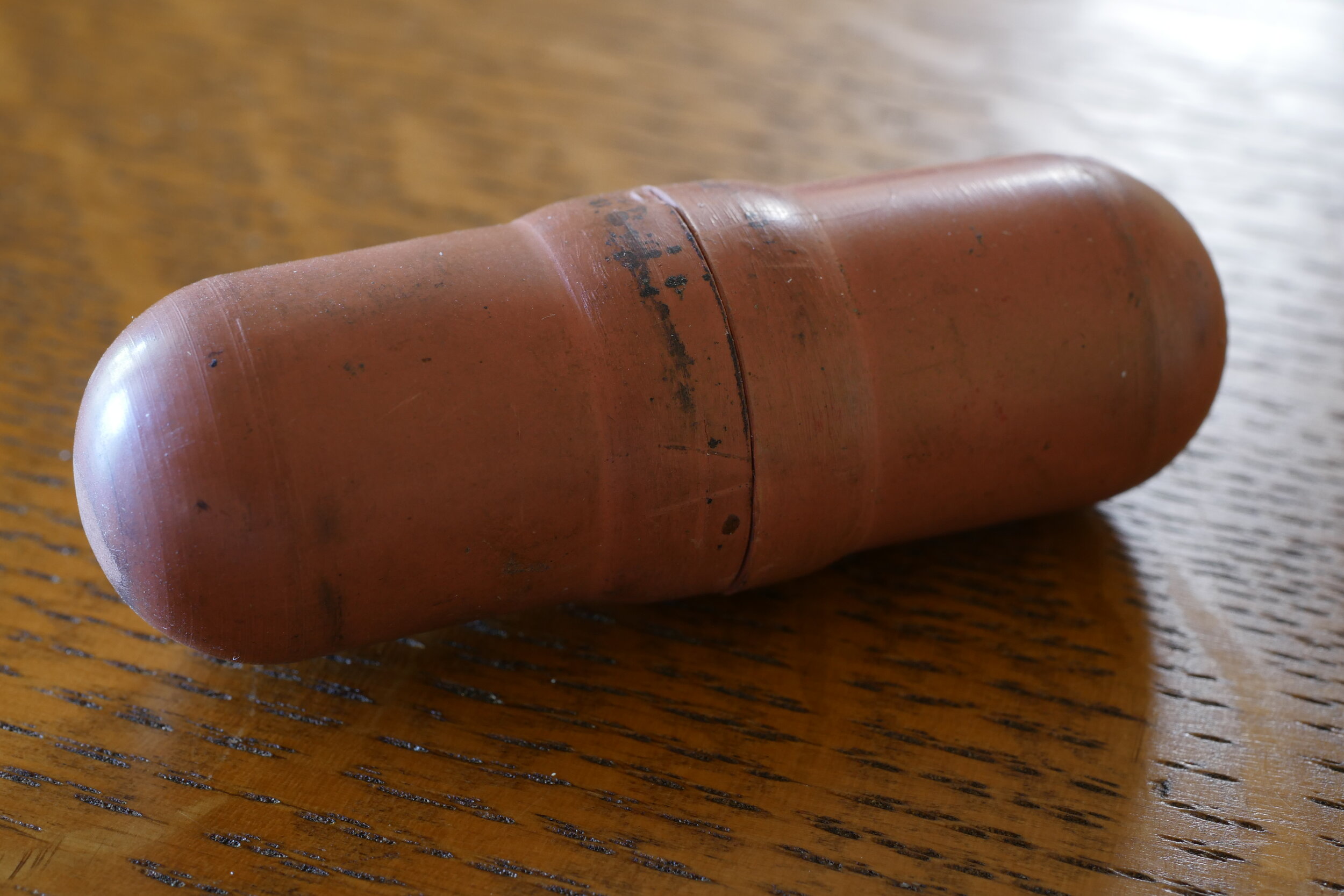Jonathan (left, with a crappy homemade snake stick), Bruce Douglas, and Jeff Swanson about to head into the snake-infested hills.
As kids growing up in the Sonoran Desert, my friends and I were always aware of the presence of rattlesnakes in the terrain we hiked and played in. Not that it upset us—far from it. We thought it was the coolest thing possible, along with coral snakes, scorpions, and other, larger coolest things possible, like cougars in the mountains we camped in. We would have been big fans of Doug Peacock’s later observation that, “It’s not wilderness unless there’s something out there that can kill you.” But we knew always to watch where we put our feet and hands, and always to look down before stepping out a door—an instinct so deeply ingrained that I do it when stepping out of a pub in London.
In those early days, if we saw a rattlesnake while on a backpacking trip we usually killed it—it was simply the accepted thing to do then. To be fair, we also usually skinned, roasted, and ate it, so it wasn’t simply murder. Later on we learned a more tolerant attitude—but we never stopped being aware of the possibility that one day you might let down your vigilance, or just have a second of bad luck.
That was okay—because we had snake-bite kits. Identical to the rather alarmingly suppository-esque looking thing shown here.
Cutter (later better known for insect repellent) first produced these in the 1950s as far as I can tell, but by the 1970s they were official Boy Scout items, issued to the military in Vietnam, and eventually copied by several companies such as Coghlans and All-Molded Plastics (the one shown here).
The kit comprised two rubber halves, designed to be suction cups, and a smaller one inside for use on fingers. Also included were scalpel blades, an iodine ampoule, and a cord to use as a tourniquet. According to the instructions, if bitten you were supposed to tie the tourniquet above the bite to restrict circulation, lance each fang mark in a cross pattern with the scalpel blade, then use whichever suction cup was appropriate to suck out the venom. And Bob’s your uncle, right?
Actually, no. It’s fortunate we never had to use one of these things as directed, because we almost certainly would have done more harm than good, especially with that tourniquet, assuming we didn’t lance a major artery, and hadn’t spent a half hour following directions instead of heading for home and a hospital.
Many studies (such as this one, of a much more sophisticated device, the Extractor) have shown that not only do suction devices not remove a remotely significant amount of venom, they can actually delay the healing process by weeks due to severe localized tissue necrosis at the site of application. The best snake-bite kit today is universally recognized as a set of car keys, to get the victim to a hospital for proper treatment with a polyvalent anti-venom. In the U.S., fatality among snake bite victims is well under one-half percent. In fact—I looked this up years ago for a book and verified it—more people in the U.S. die each year from accidentally pulling vending machines over on themselves than die from snake bite. Intriguingly, both types of victims tend to be young males . . .
The good news is, the futility and potential harm from using one of these devices is now common knowledge. No reputable company would think of marketing a product proven to be as ineffectual as blood-letting, lobotomies, and, well:
Or . . . maybe not.
In fact, Coghlans still sells their kit in hardware and outdoor stores across the country. Not only that, but in researching this piece I came across an article on a site called Pestwiki.com titled, “The Five Best Snake Bite Kits for Survival,” published in 2019. Number one? The Coghlan’s kit.
It’s followed by the Extractor (see study above) and several others. Then, after telling us which are the “five best snake bite kits,” they follow it with a sort-of kinda maybe caveat:
Note that bit, “ . . . they do remove some fluid but extract much venom.” Typo? If so it’s a doozy.
Postscript: By the time I was 14 or 15 I’d given up killing rattlesnakes, and instead was keeping them in cages in my bedroom, right under the nose of my stepfather, who would have put me out in the street if he’d found out.
Much more fun than eating them.








